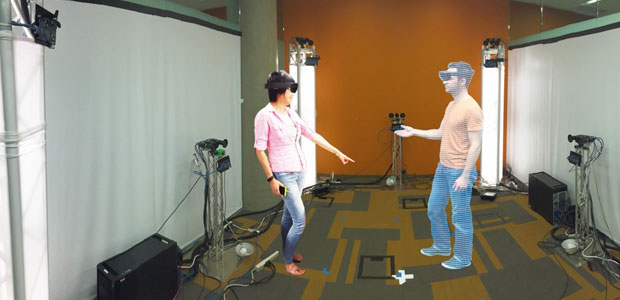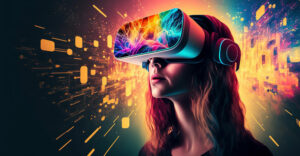Microsoft on Monday unveiled its version of a teleporter, called “holoportation,” which was designed to transmit 3D models of people anywhere in the world.
Holoportation — which leverages camera arrays for scanning — compresses, transmits and reconstructs the 3D scans to Microsoft’s HoloLens and other head-mounted displays.
The tech allows wearers of augmented and virtual reality headsets to see and interact with remote users in 3D as if they were in the same space, according to Microsoft.
Holoportation makes interacting with remote parties as natural as face-to-face communication, the company said.
The video demonstration of holoportation kicked off a busy stretch for the company, with the Microsoft Build 2016 conference set for the second half of the week and shipment of its HoloLens developer kits set to begin around that time.
Head Start on Holograms
While Microsoft likely will talk up HoloLens and holoportation during the conference, it may be awhile before telepresence is redefined radically.
The proliferation of holograms in homes and workplaces will hinge on how well Microsoft can deliver the tech, according to Charles King, principal analyst for Pund-IT.
The company “isn’t alone in the augmented reality space — heavy hitters including Intel are also active,” he told TechNewsWorld. “But complementary Microsoft assets, including consumer and business software, gaming and entertainment hardware, and services like Skype should allow the company to move forward more effectively in AR than many others.”
Normalizing Holoconferences
Whether Microsoft runs with the idea or some other company grabs the baton, holoportation, or something similar to it, will happen, according to Patrick Moorhead, principal analyst atMoor Insights & Strategy. It just won’t happen anytime soon.
“We are seeing experimentation today with large, expensive headsets requiring a lot of setup time and few apps,” he told TechNewsWorld. “I believe in seven years it will be a fixture, in that more people than not will be doing it.”
By the time holographic communication becomes commonplace, head-mounted displays won’t look like ski googles, according to Moorhead. Headsets will be wireless, less expensive and supported by thriving app ecosystems.
Commercializing HoloLens
Microsoft followed Sony’s 2014 announcement of PlayStation VR, then known as Project Morpheus, by revealing that it had been working with AR instead of VR.
It indicated then that HoloLens would see a commercial release during Windows 10’s lifetime. The US$3,000 price tag on the headset’s dev kit suggests that it will be awhile for a consumer release, much longer than the wait for PlayStation VR, which is set to arrive later this year.
However, the launch of the dev kit, roughly a year after the product’s unveiling, shows that the hardware is moving forward. Holoportation is “a logical step forward” for Microsoft’s efforts with HoloLens, according to Pund-IT’s King.
Instead of creating new environments, Microsoft is working out ways for people to “extend their experiences with artifacts from their personal surroundings,” he said.
“That could encourage a more rapid uptake of AR solutions for personal communications and enhanced work processes,” King noted, “but it should also lessen the involvement of third parties, like entertainment, gaming and other developers who play fundamental roles in VR scenarios.”




















































